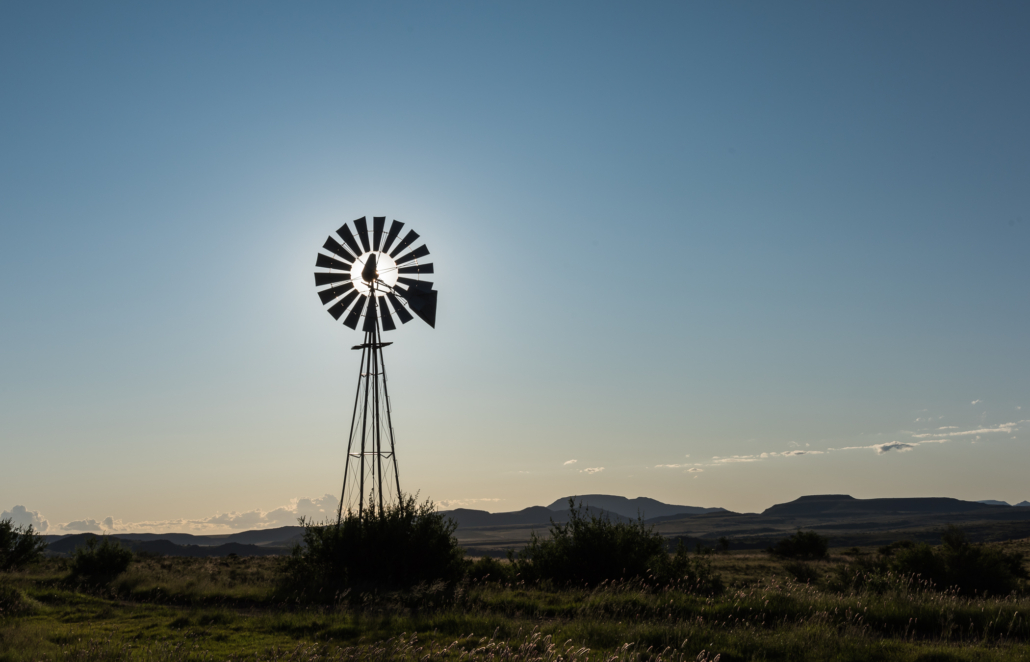Windmills in the Karoo
Photography in the Karoo in South Africa is a challenge. It is hard to get a sense of the scale of the landscape, because it is so vast. However, if you can find a Karoo windmill, it provides strong foreground interest, and acts as a geometric counterpoint to the wider landscape. The Karoo is a semi arid region, located roughly half way between Cape Town and Johannesburg. It is a magical place, with a lunar landscape of large desolate plains, broken up by wonderful rocky outcrops, flat topped kopjes, ridges and cliffs. Winter days are crisp and cold with blue skies and bright sunshine while nights are clear with wonderful starlit skies. In summer, temperatures can reach over 35 deg C with hot dry sunny days, occasionally interrupted by the spectacular thunderstorms that bring the majority of the area’s annual rainfall.
The rocks of the Karoo superveldt were formed 300 million years ago in a vast warm inland sea, surrounded by swampy deltas and forests. Fossil remains of ancient reptiles and amphibians mean the Karoo is famous amongst palaeontologists. The onset of major volcanic activity ended the evolution of reptile species when erupting lava was forced between layers of horizontal sedimentary rock, creating the jaw-dropping hard dolerite ridges and sills still seen today. Ever since then, continuous weather erosion has exposed and shaped, and reshaped the flat-topped mountains that are so characteristic of the Karoo.
At first sight, it seems impossible that much life can survive here, as groundwater is a rare commodity. Indeed the name Karoo comes from an ancient San word meaning ‘the land of the great thirst’. But the geology of the landscape, with its multiple horizontal rock layers, conceals large underground aquifers, which can be tapped by boreholes. All over the region are large numbers of steel windmills, each driving a simple piston pump to bring precious water to the surface for animals to drink.
The water in the aquifers is usually about 30m below the surface, and the windmill brings only a small amount up on each revolution, but by operating twenty four hours a day, this trickle is enough to fill a tank, usually an open topped cement cylinder, to provide reliable drinking water for livestock. In this picture, the dolerite mountains behind, shaped by eons of erosion, provide an interesting counterpoint. They are known locally as the teapot and coffeepot.
Karoo windmills are a boon to photographers. Not only because they provide foreground interest, but because they are an interesting subject in their own right, with lots of detail and strong shadows. By adjusting the shutter speed, you can get a variety of different effects from the rotating blades.
Karoo windmills have been around for over a hundred years, and farmers tend to patch and repair rather than replace with new. Every windmill tells its own story, with its repaired blades, patched framework and pockmarked vanes showing signs of a very long life.






